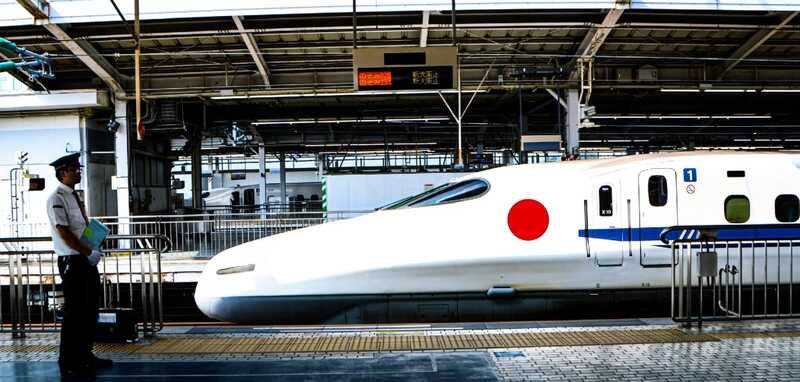 Innovative journey of Asia from Agriculture to an Artificial Intelligence (AI) leader. Photo Credits: AI generated/Pixabay
Innovative journey of Asia from Agriculture to an Artificial Intelligence (AI) leader. Photo Credits: AI generated/Pixabay
From Agriculture To Ai: How Asia Became A Global Technology And Innovation Leader
Asia once known for its traditional industries like agriculture and textiles, has transformed into a global leader in technology and innovation. This journey has been marked by remarkable advancements, setbacks, and strategies to overcome challenges.
Early Industrial Development
In the mid-20th century, most Asian countries were still developing and relied heavily on agriculture and manual labor. Technology was limited, and infrastructure was underdeveloped. Japan was one of the first Asian countries to embrace industrialization after World War II, focusing on manufacturing and electronics.
China was primarily an agrarian society with minimal technological advancements until the late 20th century. India had a growing IT sector but lacked widespread access to technology in rural areas. During this time, Asia was largely dependent on Western countries for advanced technology and machinery.
Technological Advancements Across Asia Today, Asia is at the forefront of technological innovation.
China
Early Industrial Development
In the mid-20th century, most Asian countries were still developing and relied heavily on agriculture and manual labor. Technology was limited, and infrastructure was underdeveloped. Japan was one of the first Asian countries to embrace industrialization after World War II, focusing on manufacturing and electronics.
China was primarily an agrarian society with minimal technological advancements until the late 20th century. India had a growing IT sector but lacked widespread access to technology in rural areas. During this time, Asia was largely dependent on Western countries for advanced technology and machinery.
Technological Advancements Across Asia Today, Asia is at the forefront of technological innovation.
China
- E-commerce and Mobile Payments: Platforms like Alibaba and Tencent have revolutionized online shopping and digital payments. Apps like Alipay and WeChat Pay are used by millions daily.
- 5G Technology: China is a global leader in 5G infrastructure, with companies like Huawei leading the way. The country had invested over $180 billion in 5G networks as of 2023.
- Artificial Intelligence (AI): China is investing heavily in AI, with plans to become a global leader by 2030. The AI industry is projected to be worth over $150 billion by the end of 2025.
Japan
- Robotics: Japan is a pioneer in robotics, with robots used in manufacturing, healthcare, and customer service. The robotics market is valued at over $10 billion.
- High-Speed Rail: The Shinkansen (bullet train) is a symbol of Japan’s advanced transportation technology. Japan has invested around $50 billion in high-speed rail infrastructure.
- Consumer Electronics: Brands like Sony, Panasonic, and Toshiba are globally recognized for their innovation. Japan’s electronics industry generates over $200 billion annually.
South Korea
- Semiconductors: Companies like Samsung and SK Hynix dominate the global semiconductor market. South Korea has invested $450 billion in semiconductor production by 2030.
- Smartphones: Samsung is one of the world’s largest smartphone manufacturers, with a market share of over 20%.
- Internet Connectivity: South Korea has the fastest internet speeds globally, enabling a thriving digital economy. The country has invested $1.2 billion in expanding its 5G network.
India
- IT Services: India is a global hub for software development and IT outsourcing, with companies like TCS and Infosys leading the way. The IT industry contributes over $200 billion to India’s GDP.
- Space Technology: The Indian Space Research Organisation (ISRO) has achieved milestones like the Mars Orbiter Mission and low-cost satellite launches. India’s space budget is around $1.8 billion.
- Digital Transformation: Initiatives like Digital India are bringing internet access and digital services to rural areas. The government has allocated $10 billion to this initiative.
Southeast Asia
- E-commerce Growth: Platforms like Shopee (Singapore) and Lazada (Indonesia) are transforming online shopping. The e-commerce market in Southeast Asia is projected to reach $280 billion by the end of 2025.
- Fintech: Digital payment systems like GrabPay (Singapore) and GoPay (Indonesia) are making financial services more accessible. The fintech market in the region is valued at over $60 billion.
Challenges in Growth Despite the progress
Asia faces several challenges in its technology journey:
Asia faces several challenges in its technology journey:
- Digital Divide: While urban areas enjoy advanced technology, rural regions in countries like India, Indonesia, and the Philippines still lack basic internet access.
- Cybersecurity Threats: As technology grows, so do cyberattacks. Countries like China and India face frequent data breaches and hacking incidents.
- Overdependence on Imports: Some Asian countries rely heavily on imported technology, such as semiconductors from South Korea or Taiwan, making them vulnerable to supply chain disruptions.
- Environmental Impact: Rapid industrialization and tech manufacturing have led to pollution and resource depletion in countries like China and India.
Solutions and Long-Term Strategies
Asia is actively addressing these challenges through innovative solutions and long-term strategies:
- Bridging the Digital Divide: Governments are investing in infrastructure to bring internet access to rural areas. For example, India’s BharatNet project, with an investment of $10 billion, aims to connect over 600,000 villages with high-speed internet.
- Strengthening Cybersecurity: Countries like Singapore and Japan are implementing stricter cybersecurity laws and advanced defense systems to protect data. Singapore has allocated $1 billion to cybersecurity initiatives.
- Reducing Import Dependence: China is investing heavily in domestic semiconductor production to reduce reliance on foreign suppliers.
- Sustainable Practices: Nations like South Korea and Japan are focusing on green technology, such as electric vehicles (EVs) and renewable energy.
- Investing in Education and R&D: Prioritizing STEM education and funding advancements ensure Asia remains competitive globally.
Future Prospects as a Tech Leader
Asia’s journey from a technology-dependent region to a global tech leader is remarkable. While challenges persist, the region is actively addressing them through collaboration, innovation, and education. By fostering sustainability and adapting to global needs, Asia is poised to continue its rise as a technological powerhouse and inspire other regions worldwide.
Senior Editor: Kenneth Njoroge
Financial Expert/Bsc. Commerce/CPA
